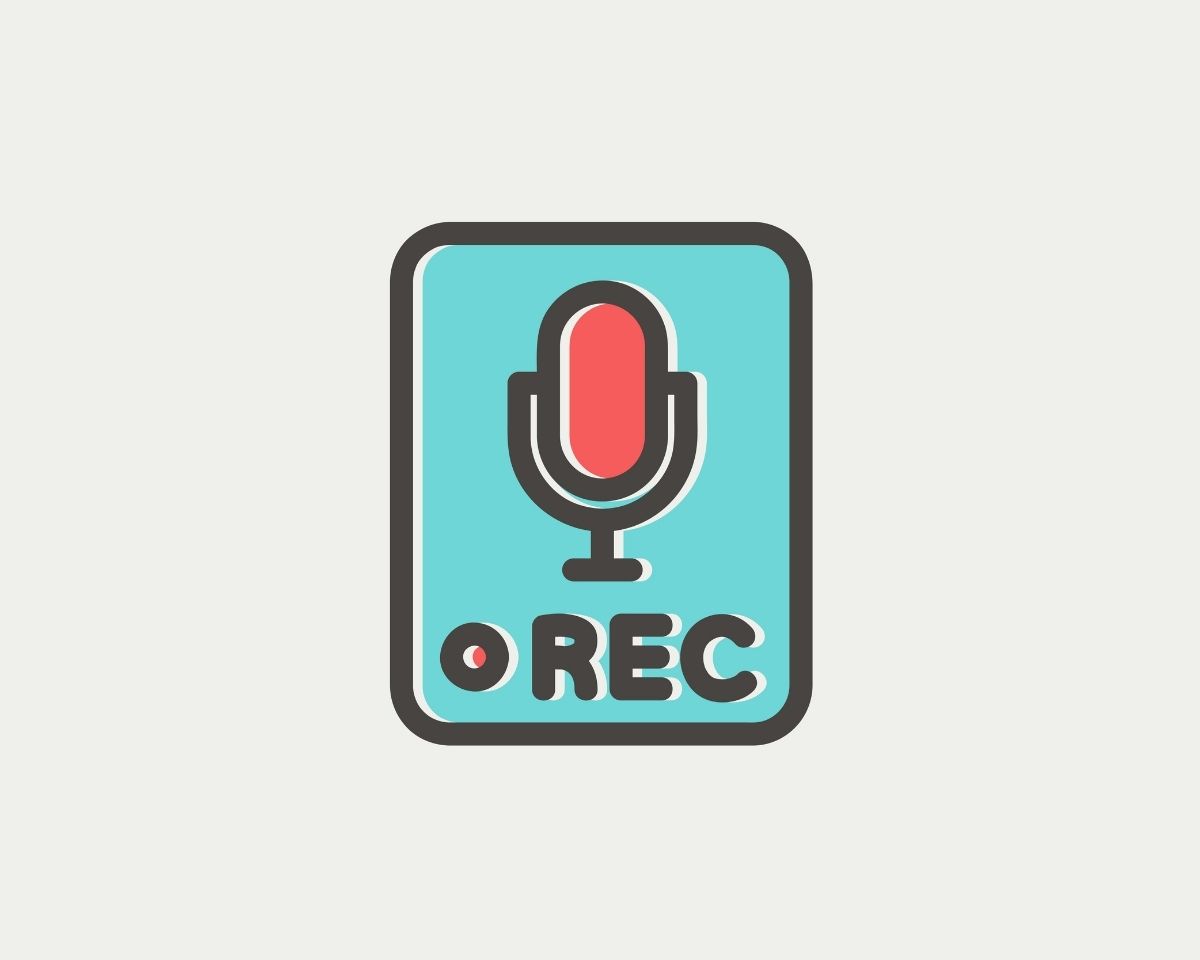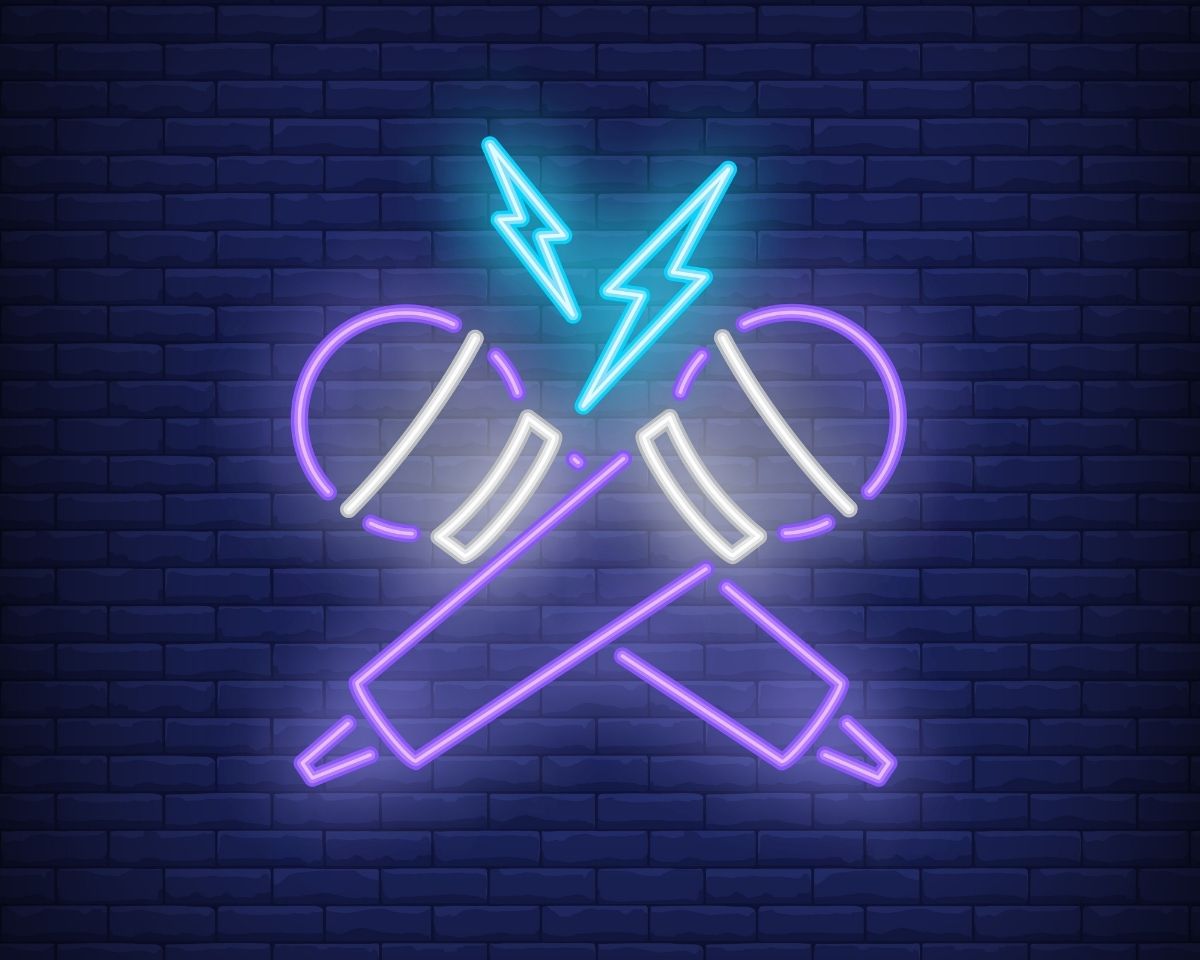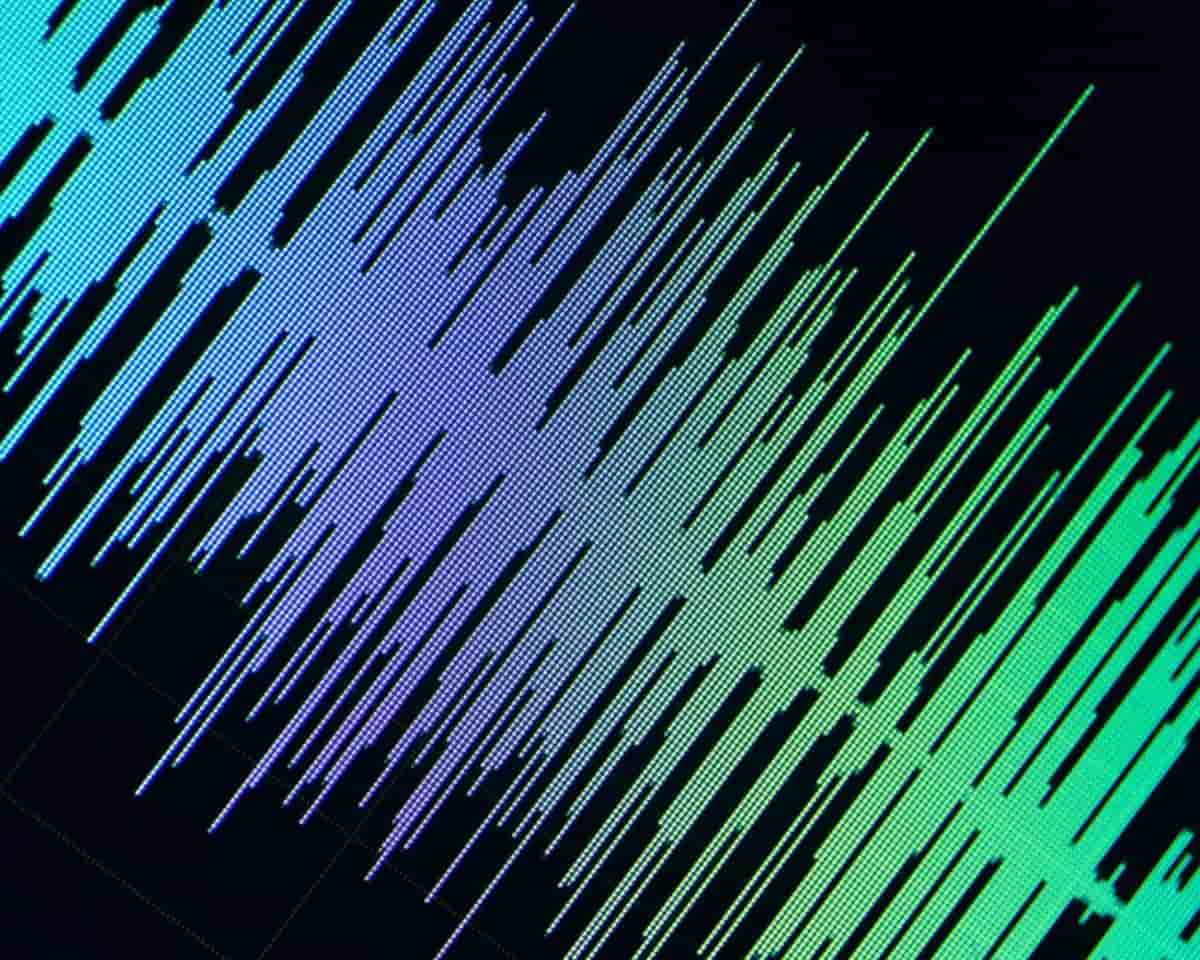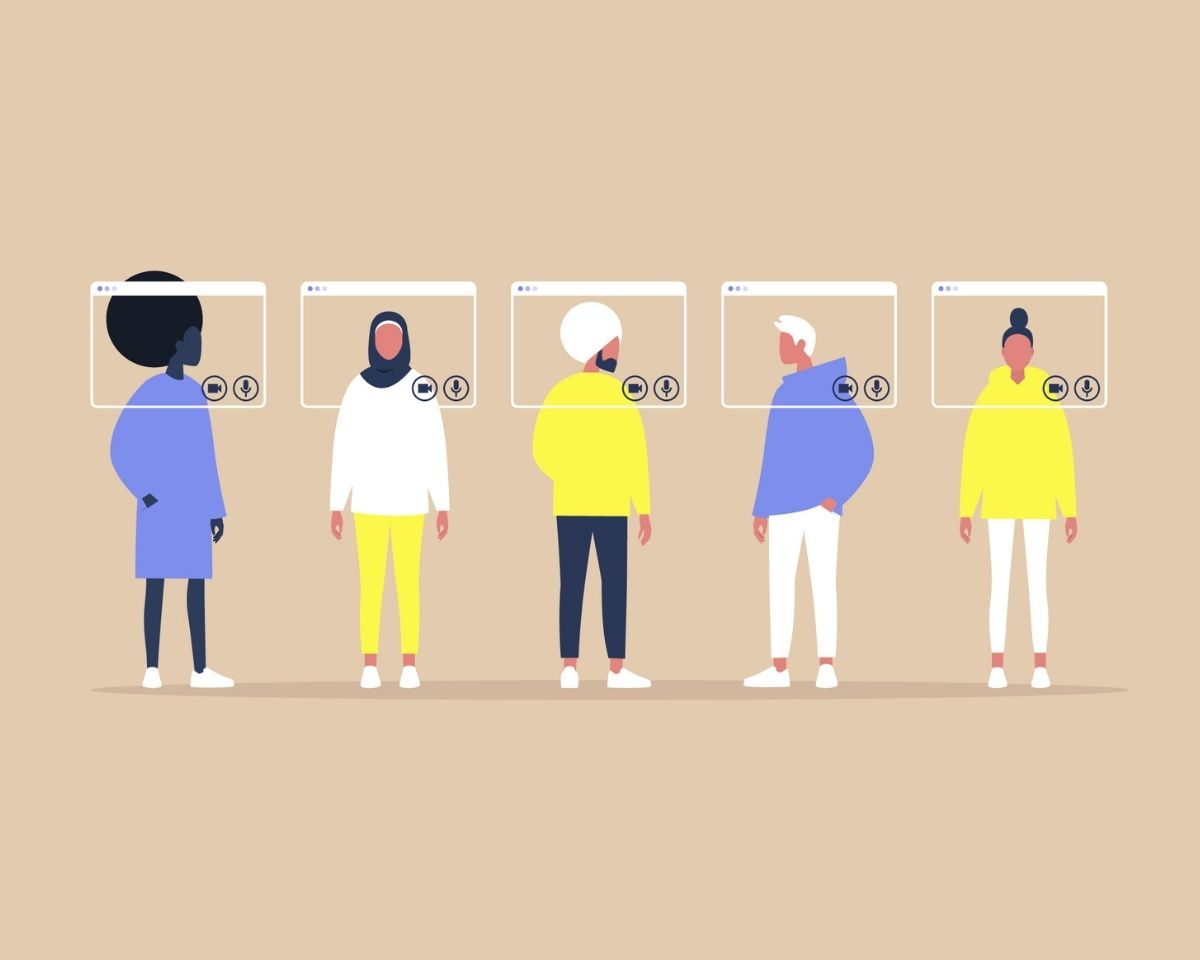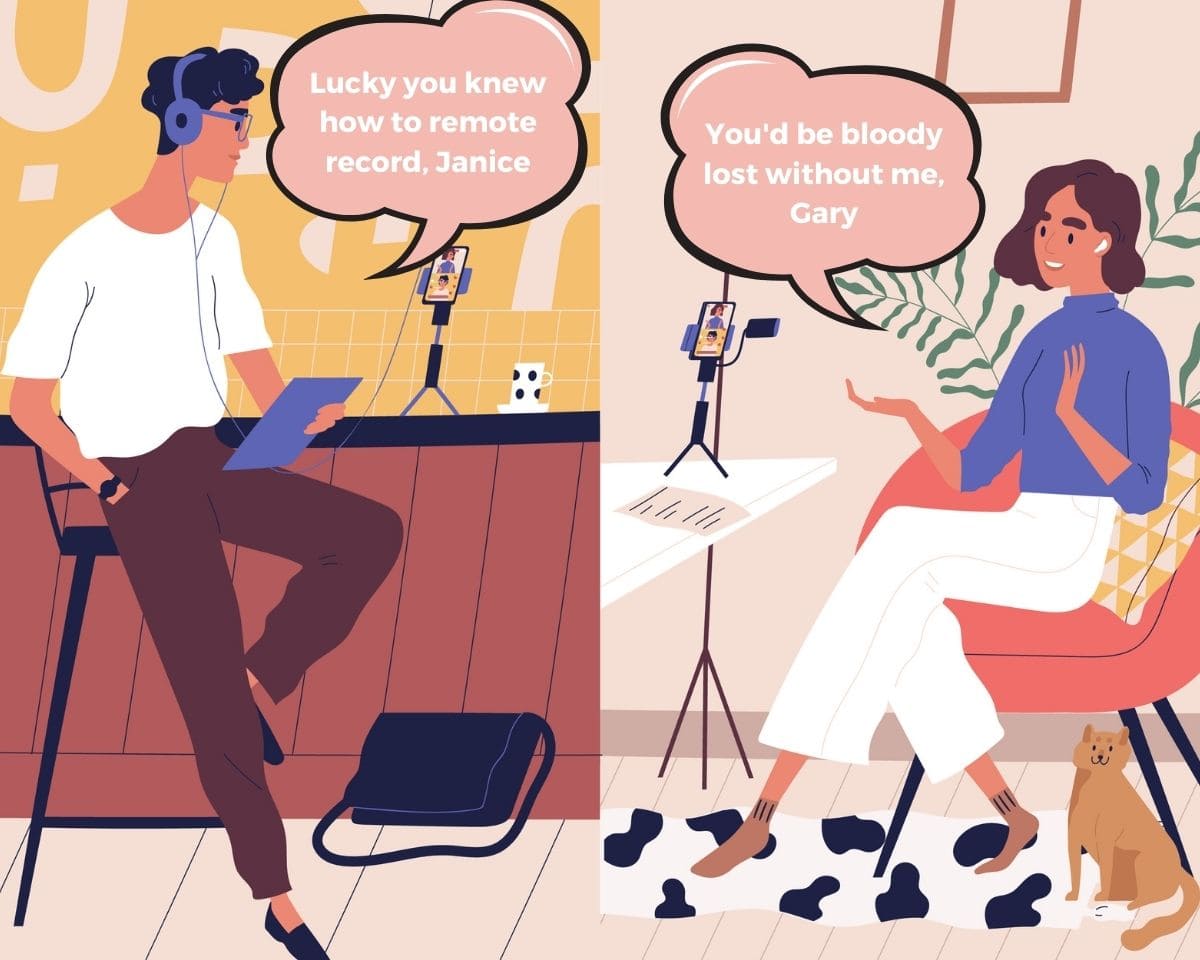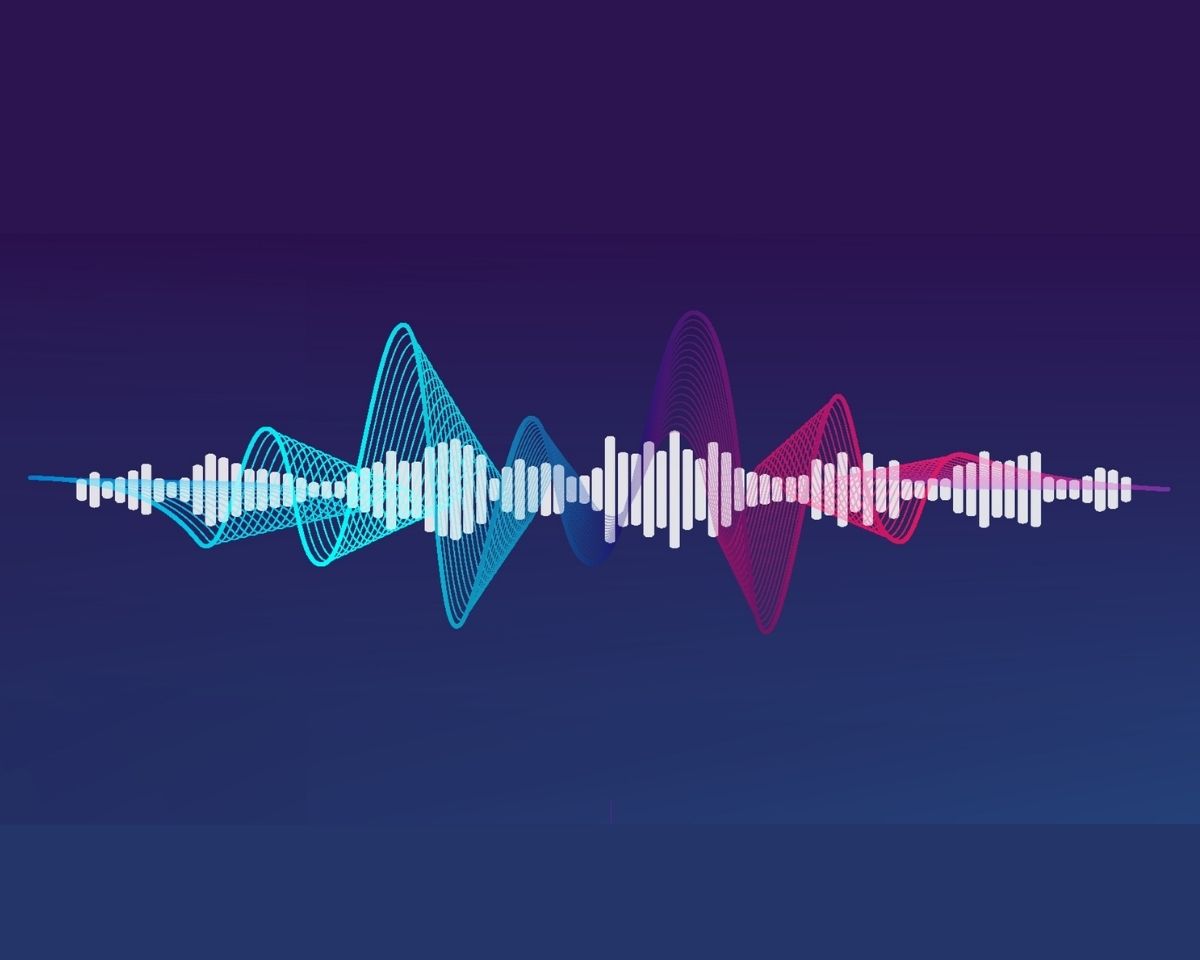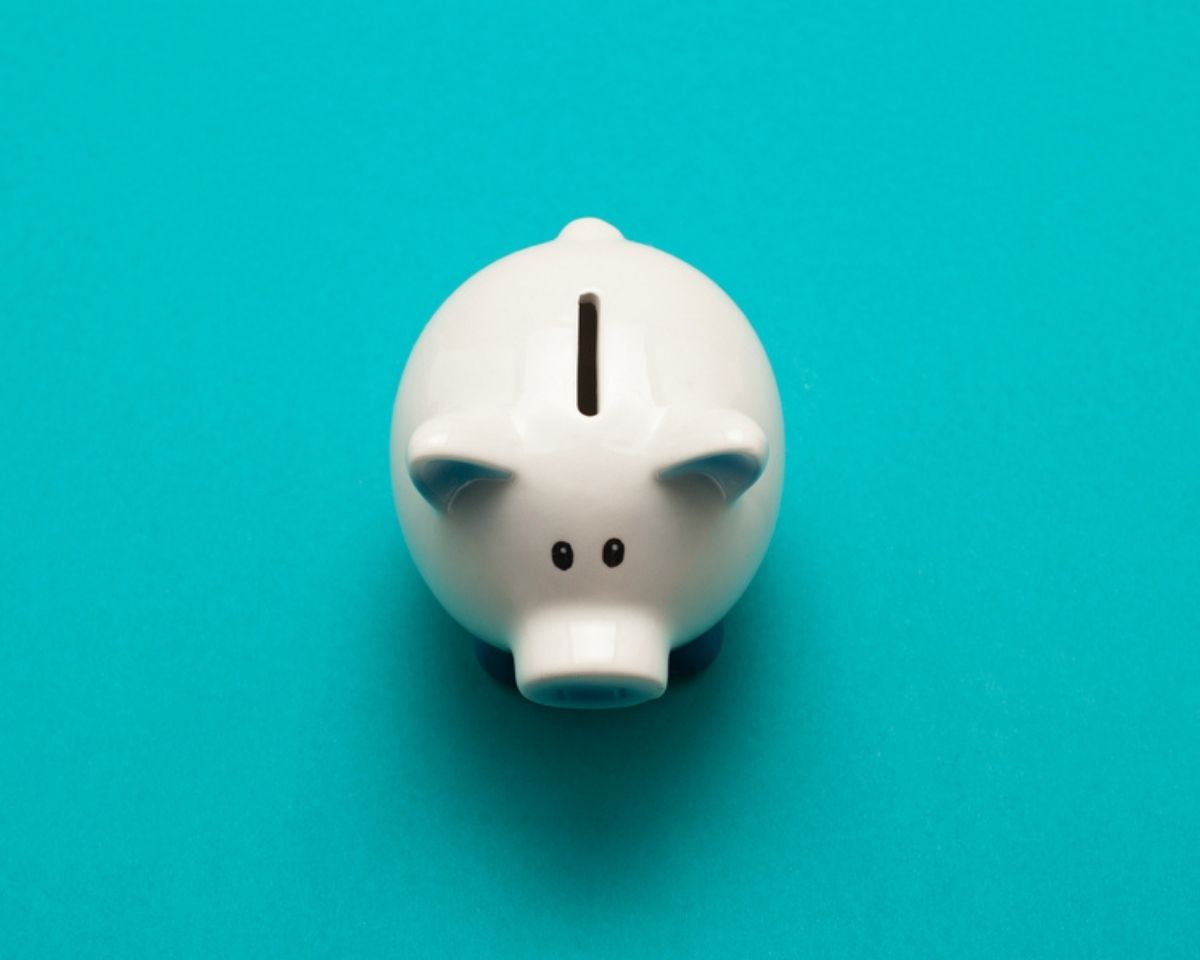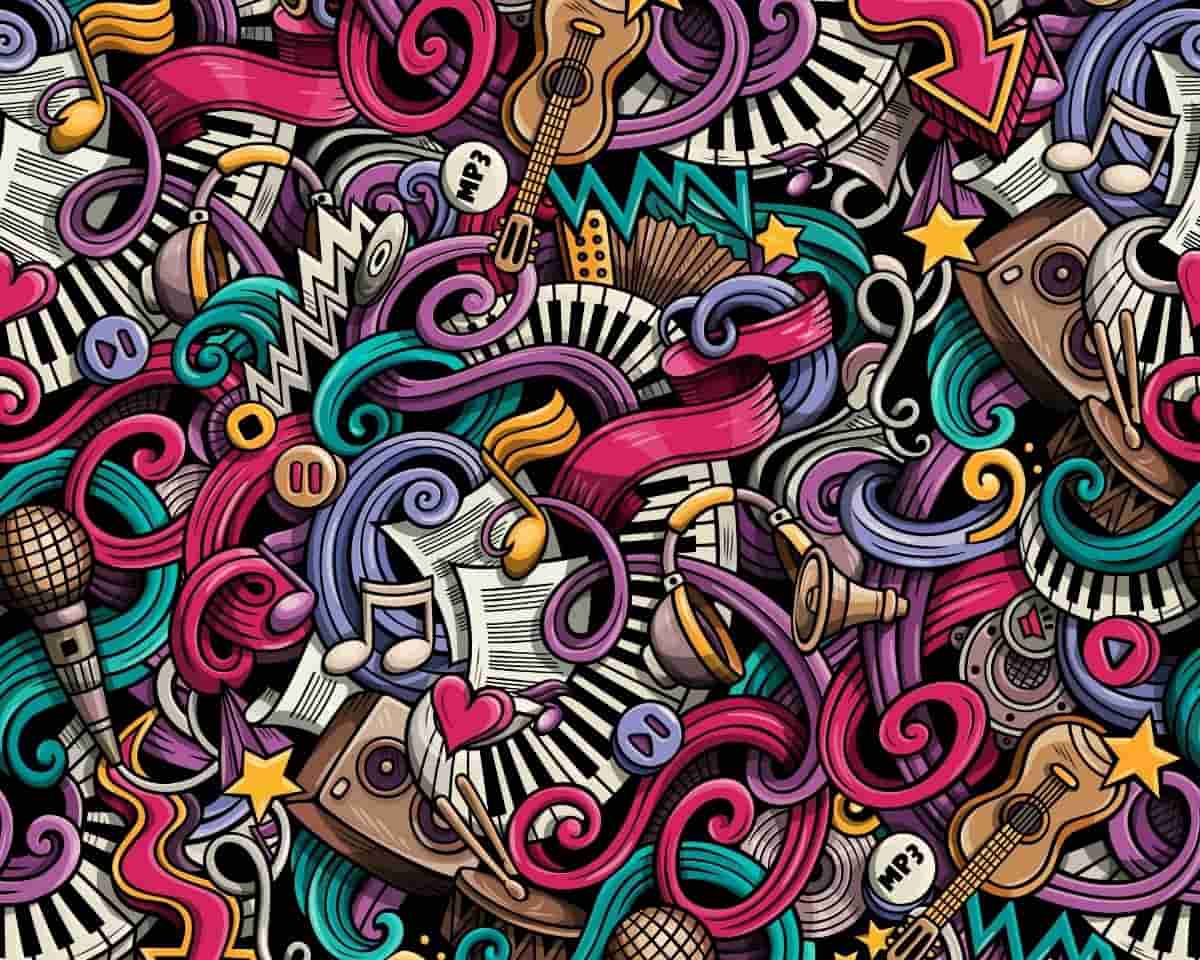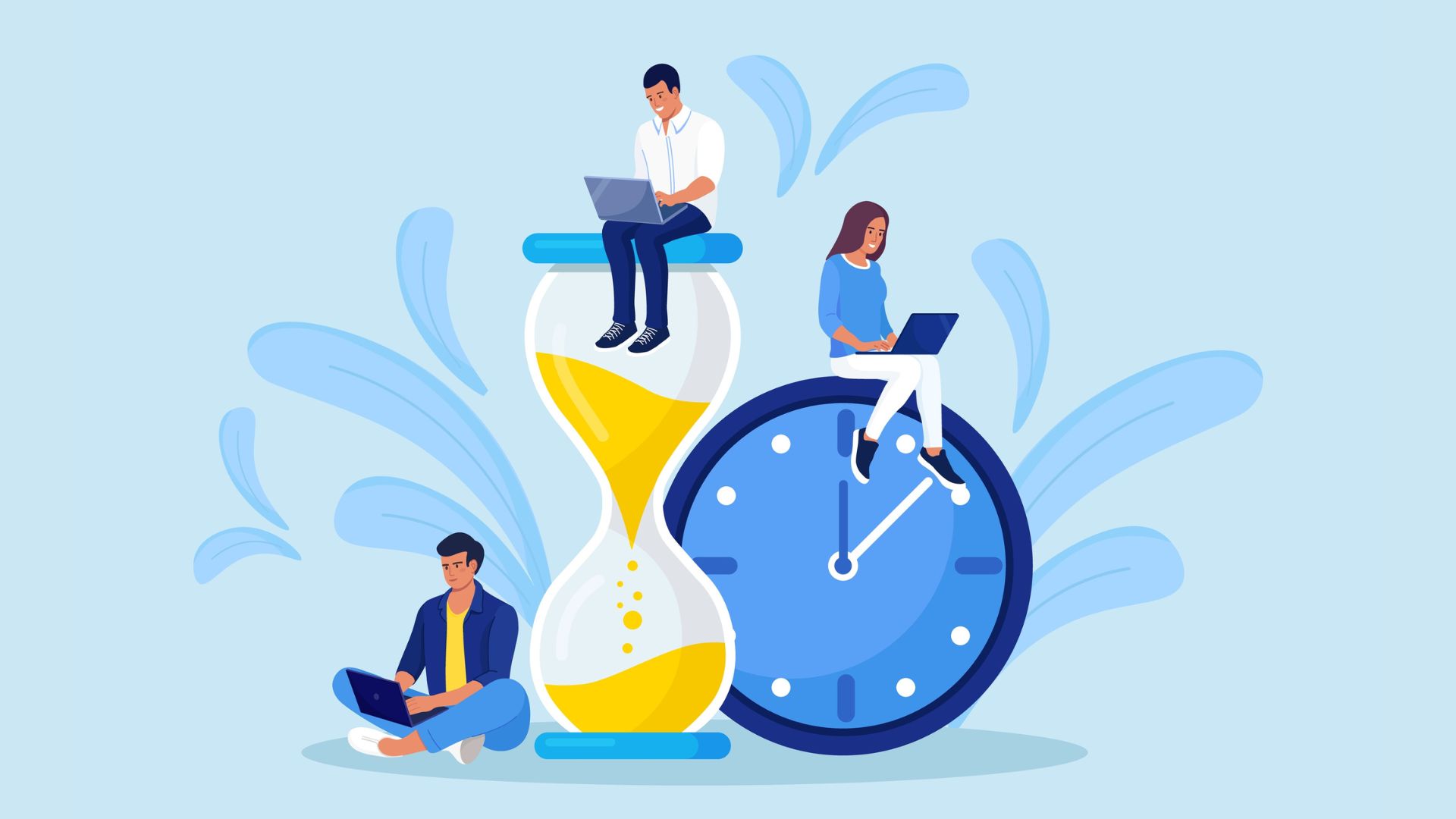How do you get your dulcet tones down on tape?
Are you at the beginning of your podcasting journey and know nothing about how to get your idea from your head into people’s ears?
Well, here’s a little 101 on how to record a podcast…
[button text=”Apple” url=”https://itunes.apple.com/au/podcast/podschool-learn-how-to-create-professional-podcast/id1239671724?mt=2″ class=””] [button text=”Google” url=”https://www.google.com/podcasts?feed=aHR0cHM6Ly9yc3Mud2hvb3Noa2FhLmNvbS9yc3MvcG9kY2FzdC9pZC8xMzAz” class=””] [button text=”Spotify” url=”https://open.spotify.com/show/1Q2L51iY2sIL8BEkAKyxZj” class=””]
The different ways to record a podcast
There are a few ways you can record a podcast depending on what the set-up of your show is, what your budget is and whether the people you’ll be speaking to are in the same room as you.
Your options include…
- Recording directly into audio editing software
- Recording via video conferencing software e.g. Zoom, Skype
- Recording via a remote recording platform designed to record podcast audio
- Recording using a portable recording device
Recording directly into audio editing software
If you’re hosting your show solo, this will be the easiest way to record your podcast. Why? Because all you need is a USB mic and your favourite audio editing program.
Setting yourself up is as simple as plugging your microphone in, making sure it’s selected in your audio preferences and hitting record.
Although, it’s important to note that if you’re using more than one USB mic you’ll need to do a bit of configuring in the back end of your computer to get things working because it won’t automatically register two microphones in the same location (so annoying).
But if you’re only planning to record one voice where you are, this is often the cheapest and simplest set-up so it’s a good option for beginners.
Which software should you use to record your podcast?
There are a bunch of different programs you can use from Garage Band to Pro Tools so it all comes down to personal preference.
Here are a couple I’ve used and can recommend…
Audacity
This is a free program a lot of podcasters use. I don’t love the interface and find other programs much easier to use but if you’re starting out and don’t want to spend money on software it’s a great option.
There are lots of podcasters who’ve been using Audacity for years and love it so it’s really about choosing a program that works best for you.
Adobe Audition
A subscription program I use to edit all my podcasts and also the program most of my producing team use professionally in my role as Head of Podcasts.
It’s not as intimidating or difficult to navigate as a program like Pro Tools so you can easily get a handle on it if you’re a beginner.
It’s also got a lot of great tools that can help you clean audio when you’re editing (although ideally, you want to record the best quality audio possible so you don’t have to worry about fixing it later).
Recording via video conferencing software
You can use platforms like Skype and Zoom to record your podcast but these were designed for video conferencing rather than recording podcast audio so they often yield lower-quality audio.
If you’re recording using Skype you’ll need to purchase additional software that will give you more flexibility with the audio like Ecamm Call Recorder.
And if you’re using Zoom there are some settings in the back end that can help you get better quality audio.
Recording via a remote recording platform
The great thing about these platforms is they’ve been created specifically to record podcasts.
That means if everyone has a good microphone and they’re recording in a decent space you can get really high-quality audio.
A lot of the platforms like Zencastr, Squadcast and Riverside.fm also incorporate video which is really important when you’re remote recording because you need to be able to see who you’re talking to.
You can record the video in some remote recording platforms too which is great if you want to use footage of your show on YouTube or to promote it on social media.
Recording on a portable recording device
A portable recording device is a great option if you want to record people in person.
Devices like the Zoom H6 and the Zoom Podtrak are lightweight and reliable and you can also use them as an audio interface which means you can plug your XLR microphones into your computer.
This is a really versatile option if you want a portable podcasting kit that gives you the flexibility to record at home or on location.
Something to consider no matter which method of podcast recording you choose
Make sure you think about where you record.
If you’re setting up a home studio your recording space needs to be audio friendly.
That means avoiding rooms with reflective surfaces like tiles, windows or high ceilings.
You don’t need to spend a lot of money getting this right. In fact, a few thick curtains or couch cushions might be all you need.
But it’s important to put effort into improving the sound of your podcast if you want your show to be a success.
Got a burning podcasting question you’d like answered? Send me an email.
Want to start your own podcast but need a little help? Download my “How To Start A Podcast” guide or sign up for my online podcasting course, PodSchool.
Hello and welcome to the show. Today I'm going to go right back to basics. Often on this podcast I'll talk about tips that will help you when you are a few steps along in the podcasting process but often I'll get e-mails from people saying “How do you even record?” and that's a fair point. If you don't know how to do that that’s a great question to ask.
Of course I have an online podcasting course PodSchool.com.au if you are looking for a step by step guide to help you go from coming up with an idea to actually getting it into people’s ears. But I thought I'd take you through some of the ways that you can record if you are literally at the beginning of the idea phase and you've got no idea about how your voice actually gets into people’s ears.
The first way is by recording directly into your computer. This is usually the best option if it is just going to be you that's talking because you don't need to worry about moving your computer around anywhere and it's probably just the simplest way to go. You just a USB mic into your computer and record directly into audio editing software like Adobe Audition, which cost some money each month, or the free program called Audacity
The next way is if you are going to have other guests or callers or people that aren't going to be in the same room with you on your show. Again you just need your computer and a microphone but the way you’ll record will be different. Usually the easiest way is with Skype. Traditionally that has been via a program called Ecamm if you’re a Mac user and Pamela if you use a PC. These programs then record the Skype video and audio that you can edit later. Just recently though Skype finally came along to the party and created their own recording software. I have yet to use it but apparently it comes with the latest version. This is how you would record whether you’re talking to someone on Skype, it’s also the way you’d record if you were calling someone for your show. If you are calling them on the phone you’re not going to have a telephone line tapped through your wooden desk like you would have in a radio station. So Skype is usually the easiest way to do that. You just get some call credit and call people and then record using either Ecamm, Pamela or Skype’s inbuilt recorder.
Another website that got started up a little while ago that I've used that can work brilliantly but can also be a bit glitchy from time to time depending on your internet connection is Zencastr. Again I’ll pop links to all of these sites in the show notes page. Just head to PodSchoolPodcast.com and type “record” in the search bar there. So Zencastr is a fantastic website that basically links you and your guest up remotely so you control everything at your end. You just press record and they can see when the conversation is being recorded so it's not like they are being recorded and they don't know. Then at the end of that session it actually records your audio where you are and your guests audio where they are and then it sends you two separate audio files in a drop box that you just match up at the end so it sounds like you are in the same room. It's brilliant when it works but I have often just gone with Skype because I found that pretty foolproof but I have people that swear by Zencastr and really when it works it is the perfect solution because it does allow you to have that high quality audio at both ends and makes it sound not like you're talking to somebody on Skype but like you're talking to somebody in the same room so that can be a great way to do it as well.
The third option is to have a portable recording device. I suggest this when you are doing a show that requires you to move around a lot and go and interview people. I think it's the best way to do that because you don't want to lug your computer around and risk it running out of juice or not being able to be plugged in somewhere. Or heaven forbid you don't have enough memory or the computer crashes. I've recorded podcasts before on audio software and 45 minutes in the entire episode has died. I did that once and I never used software again. A lot of people use software without any problem at all but I am a get it on to a hard drive lady. I use the zoom H6 which is an awesome little device that allows you to plug in up to four microphones and it's super portable. With my show You’ve Gotta Start Somewhere, I go out and I sit down with people one on one to do the interviews. I don't do any of the interviews over Skype or remotely. I can just pop everything into a carry case and take it with me and every single time when I bring out all my gear my guests say “wow, this is really prodfessional.”
The last thing I'll bring up is something that's only just recently come out and that is Anchor. They are also a podcasting platform so you can host your show there as well. I have yet to use this but I'm seeing it around more and more. It's an application or a Web site that allows you to actually record in the app, on desktop or on mobile so you can plug in whatever microphone you want. Originally when it first came out there was this idea of recording podcasts onto your phone to try and make it really easy and I thought “Oh God the last thing we need is a way that makes crappy sounding podcasts.” You know I like the idea of being able to take things everywhere but for me audio quality is the most important thing if you want to compete and have a lasting show because there's a lot of good stuff out there and if you're just talking into your phone in a windy park you're never going to compete with the big guns. The application that they use to edit by the looks of things is sort of a bit drag and drop. I prefer to use a program like audition but with anything as long as you are recording high quality audio (and that’s mostly to do with microphones which I’ll cover next week), it doesn’t matter what you record into. It just depends on what you prefer to work in. Audition is a much better program than Audacity but the sound quality isn't going to be any worse at the end if what you have laid down in the first instance through a great microphone is high quality. So really your audio program comes down to your personal preference. Anchor seems to be spending a lot to get their program out there and drag and drop is good when you’re just starting out. So that could be an option for you to check out to it's free for hosting so you can actually host your podcast there.
I hope that helped you understand what it takes to record a podcast and get it into a little audio file. That means you can send it to your podcast host and have people listening on the other end. If you want even more in-depth help with your podcast you can head to PodSchool.com.au and check out my online podcasting course. And if you have any questions you want answered on the show you are always more than welcome to e-mail me. Just head to PodSchoolPodcast.com and click on the contact page. I'll see you next week and until then, happy podcasting.
